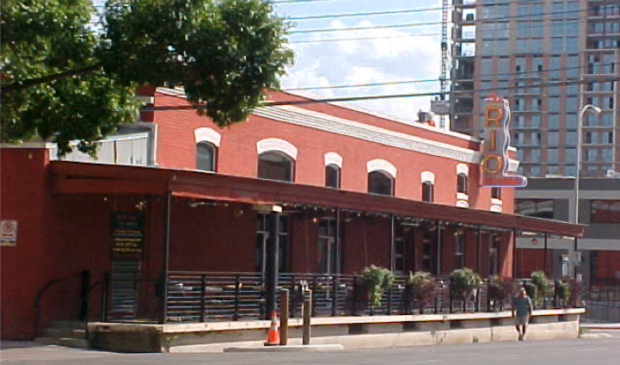Landmark commission resists demolition of San Jacinto warehouse
Thursday, October 28, 2021 by
Kali Bramble The Historic Landmark Commission faced a proposal to tear down a historic Austin property this past Monday, reviewing an application to demolish a warehouse at 301 San Jacinto Blvd.
The brick building, which was constructed in 1912, has since passed through the hands of several notable Austin grocers. Hoping to collect information to justify preservation, the commission unanimously voted to initiate historic zoning.
Though it sits outside of downtown’s designated warehouse district, the board agreed that the building exemplifies the style of utilitarian architecture integral to Austin’s transition from settlement to industrialized city in the early 20th century. The embodiment of a distinctive architectural style is one of two criteria the commission requires for historic landmark consideration.
“This is probably the best example of a warehouse in this part of the city,” Commissioner Kevin Koch said of the property. “Considering the quality, detailing, integrity and community value it presents in its location next to the convention center, it really has a lot going for it.”
Upon its construction in 1912, 301 San Jacinto operated as a wholesale grocery warehouse and coffee roaster for several Austin grocers. Its longest operation was under the John Bremond Company, one of the city’s most prominent suppliers of goods to stores and restaurants until the early 1960s. Since then, the building has operated as a wholesale auto parts warehouse, a restaurant and the set of MTV’s “Real World” filming in 2005.
“When this was built, the railroad was the principal means of getting things distributed to all kinds of consumers,” Historic Preservation Officer Steve Sadowsky said. “This building tells the story of how the groceries came to be here.”
Real estate development attorney Richard Suttle, representing the applicant, voiced their intention to “object to historic zoning at every step of the way.”
Commissioners also weighed the potential for Austin’s newly formed economic development corporation to influence the case.
The EDC, formed in October 2020 to manage the city’s real estate partnerships, began the meeting outlining a Cultural Trust program that would engage in preservation efforts to support the arts. With funding for this program fresh in their minds, commissioners cautiously expressed hope that the EDC might help them to accomplish their goals.
“We are charged with doing everything we can to support and maintain Austin’s history and landmarks, yet we’ve got an economics of scale in the downtown area where pressures are becoming more and more enormous,” Commissioner Ben Heimsath said. “We need better tools, and I’m hoping the economic development corporation will be aggressive and proactive … about leveling the playing field for historic properties.”
In the meantime, the commission has initiated historic landmark designation for the San Jacinto warehouse and will revisit the case at its next meeting.
“I encourage staff to make their follow-up presentation in light of the rapidly disappearing warehouse district possibilities,” Commissioner Koch concluded. “The very thing that reignited the growth of downtown many years ago … is about to be gone, and it will just be a bunch of people in towers staring across the chasm. I think we need to do everything we can to retain these properties.”
The Austin Monitor’s work is made possible by donations from the community. Though our reporting covers donors from time to time, we are careful to keep business and editorial efforts separate while maintaining transparency. A complete list of donors is available here, and our code of ethics is explained here.
You're a community leader
And we’re honored you look to us for serious, in-depth news. You know a strong community needs local and dedicated watchdog reporting. We’re here for you and that won’t change. Now will you take the powerful next step and support our nonprofit news organization?









